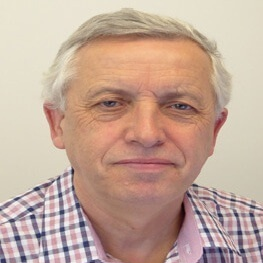Selected Papers from the 2nd Edition of Global Conference on Catalysis, Chemical Engineering and Technology (CAT 2018)
A special issue of Catalysts (ISSN 2073-4344).
Deadline for manuscript submissions: closed (28 February 2019) | Viewed by 23889
Special Issue Editors
Interests: heterogeneous catalysis; environmental catalysis; surface reactivity; inorganic chemistry; spectroscopies; nanomaterials; nanoscience; porous materials; zeolites; valorization of biomass
Special Issues, Collections and Topics in MDPI journals
2. Chimie ParisTech, CNRS, PSL University, F-75005 Paris, France
Interests: fine chemistry from natural substances: carbohydrates, cyclodextrins, nucleosides, lipids; chemistry and processes for the sustainable development; organic chemistry in green solvents; homogeneous, heterogeneous, and micellar catalysis; continuous flow applied to organic chemistry; organic chemistry under microwave activation
Special Issues, Collections and Topics in MDPI journals
Special Issue Information
Dear Colleagues,
Following the success of the first Global Conference on Catalysis and Reaction Engineering at Las Vegas, USA on October 19-21, 2017, we take pleasure to announce second edition of the conference. The 2nd edition of Global Conference on Catalysis, Chemical Engineering & Technology (CAT 2018) will take place at Holiday Inn Rome, Italy from 13th to 15th September 2018. CAT 2018 will provide a dedicated platform to peer researchers, young inspired scientists, academicians, and industrialists to meet, discuss and share the knowledge that’s still more to be revealed in the field of Catalysis and Chemical Engineering. The aim of the conference is to bring together leading experts in the field of catalysis, chemical engineering and technology. The series of talks, poster presentations, workshops, discussions and networking events will keep participants engaged in learning and making new connections at this Catalysis, Chemical Engineering & Technology Conference.
The present Special Issue will feature the works presented at CAT 2018 that promote linkage of the catalytic science, ingineering and technology. Authors with expertise in any topic of catalysis are cordially invited to submit their manuscripts to this Special Issue of Catalysts. Significant full papers and review articles are very welcome. The topics of the conference will cover various aspects of catalysis in all of its diversity, as well as other areas on the boundaries such as environmental protection, energy, sustainability, green chemistry, fine chemistry, biotransformation, surface chemistry and enzyme and microbial technology.
More information about the conference can be found at https://catalysis-conferences.magnusgroup.org/.
Scientists are cordially invited to contribute original research papers or reviews in all aspects of catalysis, chemical engineering and technology to this special issue of Catalysts.
Prof. Dr. Stanislaw Dzwigaj
Prof. Dr. Christophe Len
Guest Editors
Manuscript Submission Information
Manuscripts should be submitted online at www.mdpi.com by registering and logging in to this website. Once you are registered, click here to go to the submission form. Manuscripts can be submitted until the deadline. All submissions that pass pre-check are peer-reviewed. Accepted papers will be published continuously in the journal (as soon as accepted) and will be listed together on the special issue website. Research articles, review articles as well as short communications are invited. For planned papers, a title and short abstract (about 100 words) can be sent to the Editorial Office for announcement on this website.
Submitted manuscripts should not have been published previously, nor be under consideration for publication elsewhere (except conference proceedings papers). All manuscripts are thoroughly refereed through a single-blind peer-review process. A guide for authors and other relevant information for submission of manuscripts is available on the Instructions for Authors page. Catalysts is an international peer-reviewed open access monthly journal published by MDPI.
Please visit the Instructions for Authors page before submitting a manuscript. The Article Processing Charge (APC) for publication in this open access journal is 2200 CHF (Swiss Francs). Submitted papers should be well formatted and use good English. Authors may use MDPI's English editing service prior to publication or during author revisions.
Keywords
- Design, Preparation and Characterization of Catalysts
- Heterogeneous Catalysis
- Industrial Catalysis
- Environmental Catalysis and Green Chemistry
- Biocatalysis and Biotransformation
- Homogeneous Catalysis and Molecular Catalysis
- Chemical Engineering
- Catalysis in Nanotechnology
- Spectroscopy in Catalysis
Benefits of Publishing in a Special Issue
- Ease of navigation: Grouping papers by topic helps scholars navigate broad scope journals more efficiently.
- Greater discoverability: Special Issues support the reach and impact of scientific research. Articles in Special Issues are more discoverable and cited more frequently.
- Expansion of research network: Special Issues facilitate connections among authors, fostering scientific collaborations.
- External promotion: Articles in Special Issues are often promoted through the journal's social media, increasing their visibility.
- e-Book format: Special Issues with more than 10 articles can be published as dedicated e-books, ensuring wide and rapid dissemination.
Further information on MDPI's Special Issue polices can be found here.






